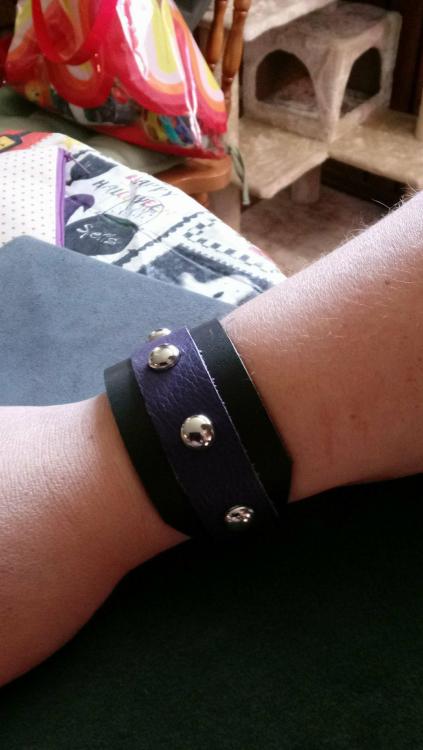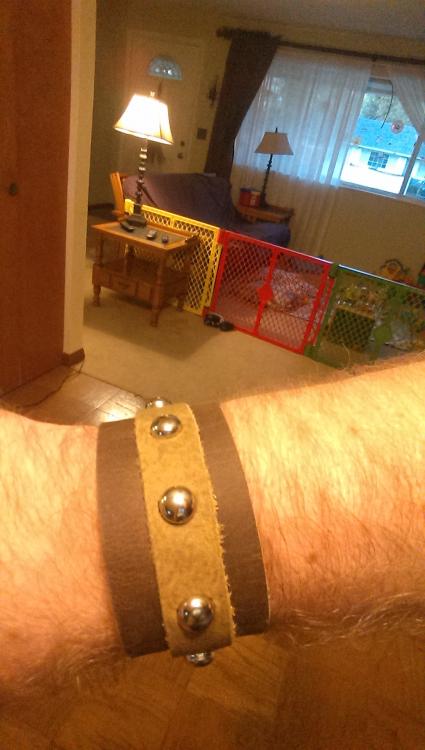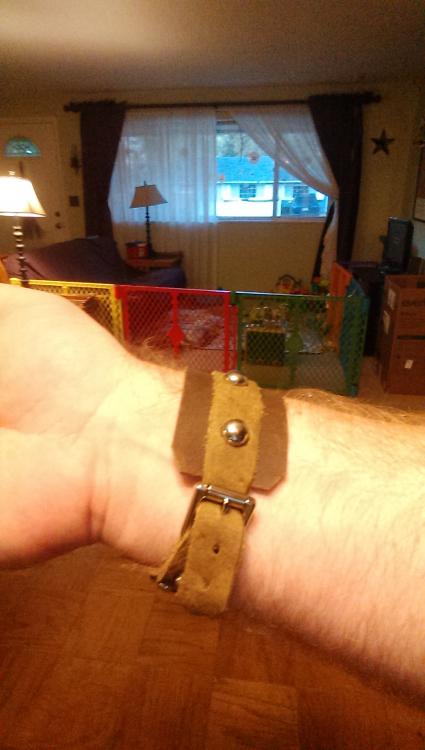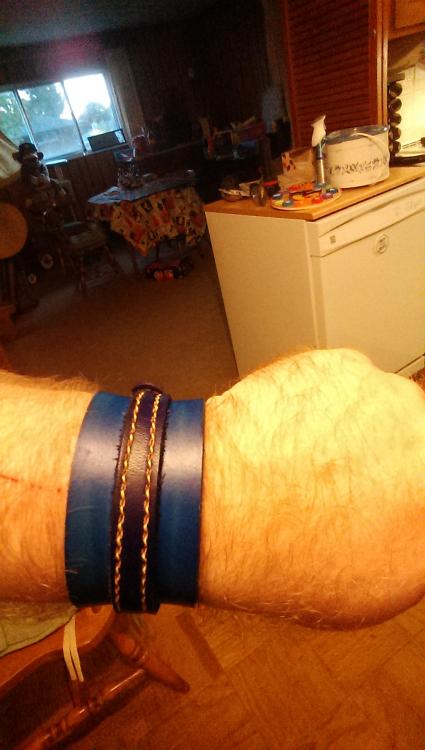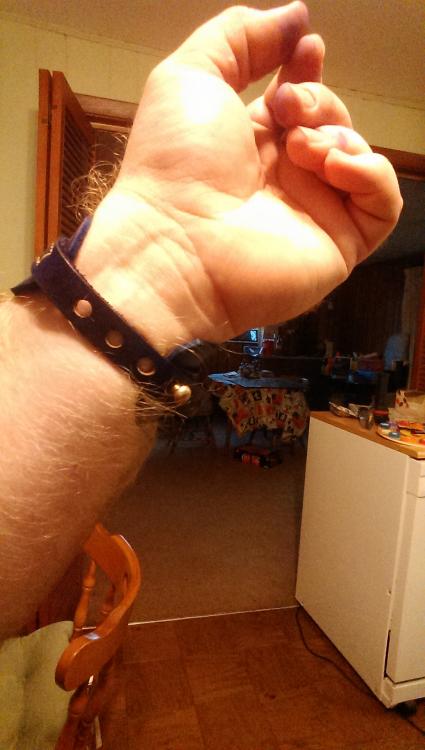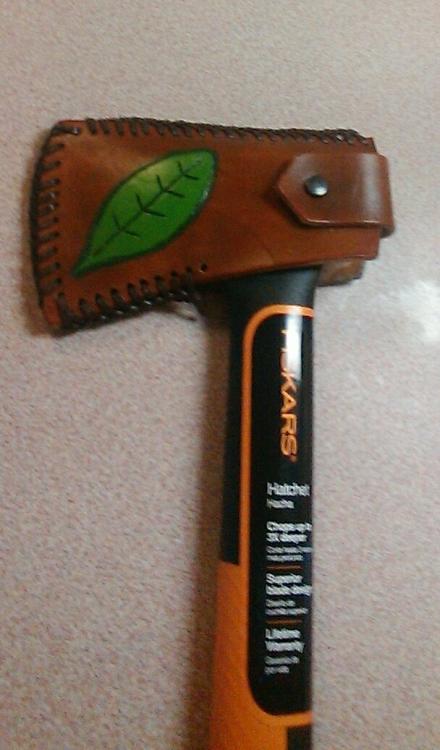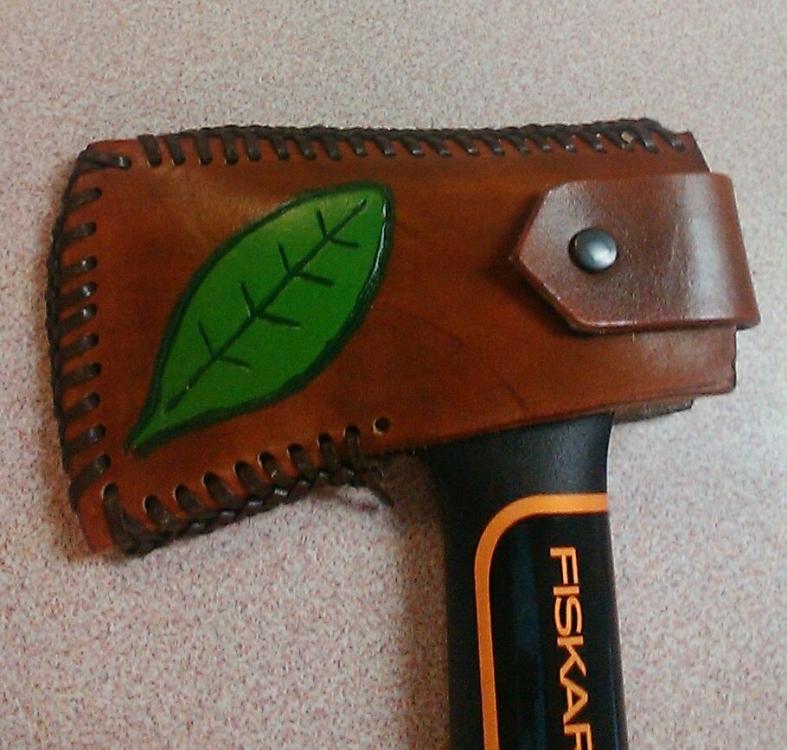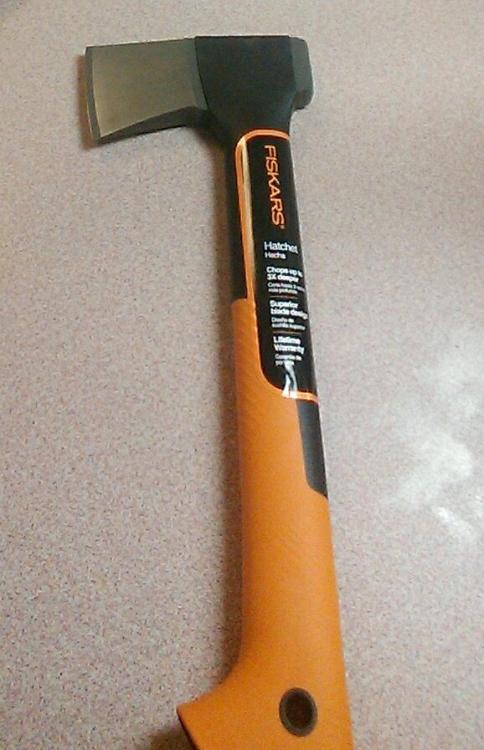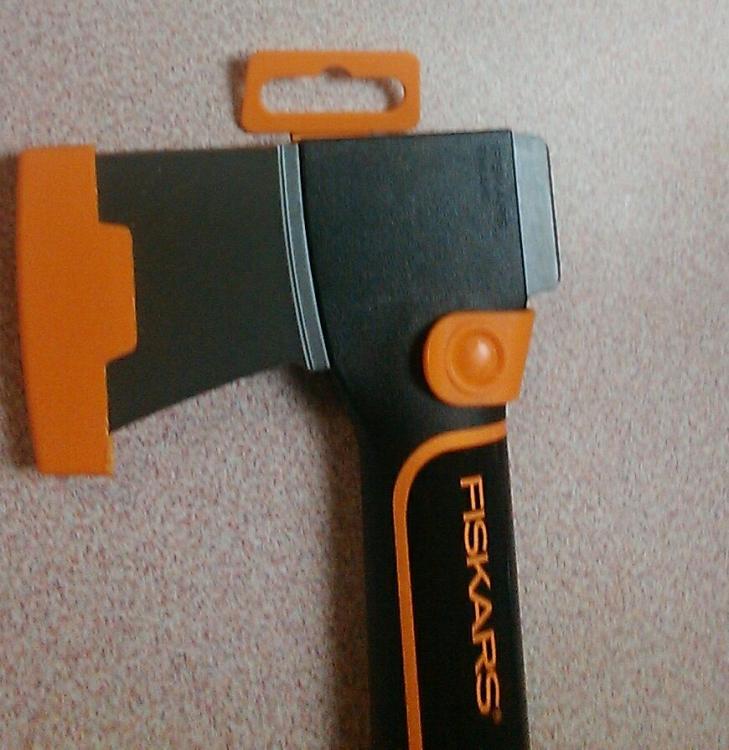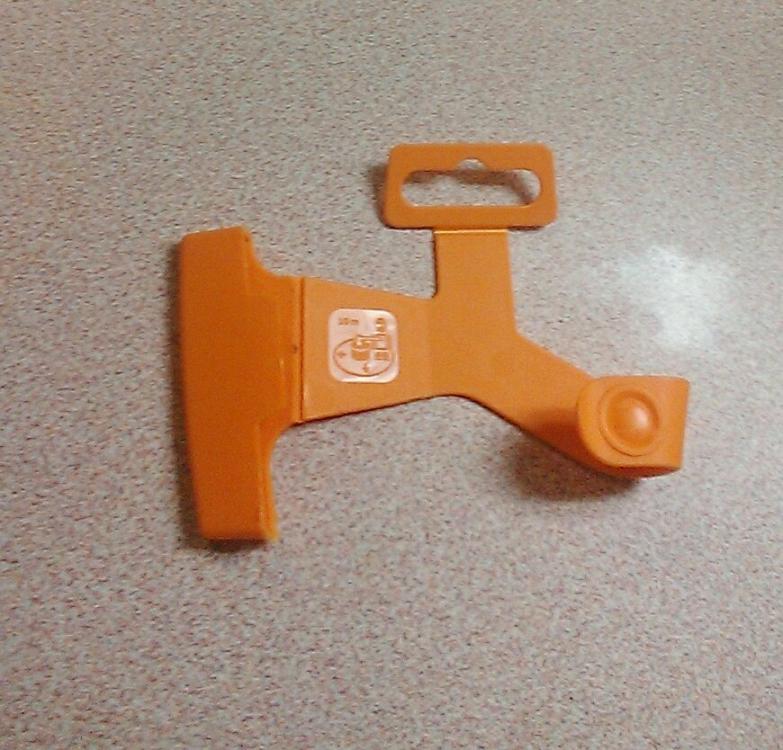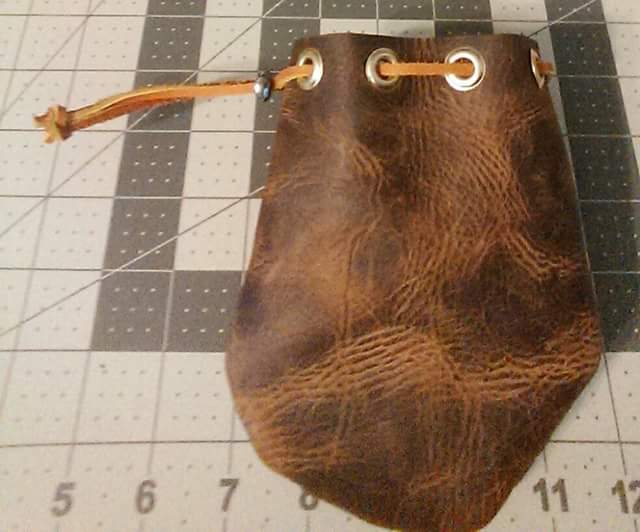-
Posts
55 -
Joined
-
Last visited
Content Type
Profiles
Forums
Events
Blogs
Gallery
Everything posted by epiphanist1248
-

Just a little croc.
epiphanist1248 replied to RWClark's topic in Gun Holsters, Rifle Slings and Knife Sheathes
I'm not a big gun person but this is pretty sweet. Well done. -
I've been using a 16oz. rubber mallet from Lowe's ever since I started working with leather, about two years ago now. I use it for everything: tooling, setting rivets and snaps, driving punches and chisels, you name it. It's the only hammer I've ever used for leather. It's starting to wear out and I've been thinking about replacing it. Now, this hammer cost about $4 and has lasted me for years (I've only been using it for leather for 2 years, but I've probably had it for 5 or 6 now) and that's a strong argument in favor of getting another one just like it. But copper and tubular rivets, and some of the heavier snaps, take forever to set with the thing. So I'm starting to wonder: Would a heavier hammer might be more suitable to the task? Also: would a rawhide or poly striking tool have less bounce, and would that make a difference? I'd rather not buy several expensive tools if I can avoid it, so is there One Hammer to Rule Them All out there? A leatherworker's Mjolnir that's just great, or even pretty good, overall for All The Jobs? (If it comes right down to it, I'll buy two hammers, one for These Jobs and one for Those Jobs, but I'd rather avoid having to build a whole rack for a hammer collection, is what I'm getting at.) Thanks in advance for answering what is probably a dumb question.
-
I wondered about the same thing a while back. After a while, I made a leather hammer loop for my tool belt and never looked back. Holds even my heaviest hammers, works like a dream, and it's pretty too boot.
-

Wrist cuff #3
epiphanist1248 posted a topic in Purses, Wallets, Belts and Miscellaneous Pocket Items
This is my third wrist cuff, and my favorite so far (even if it doesn't fit me - I made it for my wife). Black oil-tanned and purple garment leather with nickle silver spots and a nickle silver button closure.-
- wrist cuff
- oil-tannned
-
(and 3 more)
Tagged with:
-
@battlemunky I make a lot of dice bags and softer leather is much better for those. I'll probably work some neatsfoot oil into #1 to make it a little more comfortable.
- 7 replies
-
- angelus dye
- button closure
-
(and 2 more)
Tagged with:
-
This is my second wrist cuff, made from some scraps of oil-tanned leather from Springfield Leather (Field Drab top and Crazy Horse bottom). I used glue and round spots to attach the two pieces, and the closure is a buckle. I like the studded leather aesthetic a lot, and it's more comfortable than #1, but I'm not quite as pleased with it. The Field Drab oil-tanned is really stretchy and I don't like working with it overall, it's not something I think I'll buy again.
-
- wrist cuffs
- oil-tanned
-
(and 2 more)
Tagged with:
-
I made a wrist cuff/bracelet thing. Veggie-tanned leather, light blue and purple Angelus dye and Eco-Flo Super Sheen top coat, gold stitching, brass button closure, and burnished back. It's a little stiff but I'm overall very pleased with the way it turned out. (This actually isn't my straightest stitching; luckily, the thread covers my wobbly hole-punching.)
- 7 replies
-
- angelus dye
- button closure
-
(and 2 more)
Tagged with:
-

Rivets - rapid vs. tubular vs. double cap
epiphanist1248 replied to epiphanist1248's topic in Hardware and Accessories
@Mattsbagger Thanks. I've used copper burr rivets before, but that's a lot of rivet for the project I have in mind. For this exercise, I actually don't need something to hold at stress points. I've got that covered. What I need is something I can set easily, that will hold decently if it's not stressed.- 8 replies
-
- rivets
- rapid rivets
-
(and 2 more)
Tagged with:
-
Is there a general consensus as to which rivets are "the best" - e.g. best hold, easiest to set, best price? Assume for the sake of discussion that the backs will be hidden and only the fronts/tops will be visible, so overall appearance isn't the big issue.
- 8 replies
-
- rivets
- rapid rivets
-
(and 2 more)
Tagged with:
-

Fiskar's hatchet cover
epiphanist1248 replied to epiphanist1248's topic in Gun Holsters, Rifle Slings and Knife Sheathes
@resqman I did not, if I make another one of these covers that's something I will definitely do. One of the laces got cut the first time I put the cover on the hatchet; the rest are fine. @cjartist It took a little wiggling the first time, but now it goes on and off pretty easily. That's part of why I laced it instead of stitching it - to give it a little more flex. -
Last month we bought a hatchet to take down a tree in the back yard. Between the two of us, it only took about half an hour, with us alternating taking swings and watching our son splash in his pool. For being little, this is a really nice hatchet. (I'm not surprised; Fiskar's is a great brand; I've had a pair of their scissors since elementary school and they still work great.) Anyway, Fiskar's is usually really good about putting these nice hard plastic covers with toggle locks on their bigger axes, but for this one they just put on a cheap, softer plastic cover that feels like it will probably crack and be ruined after a while. This is a good tool that deserves better. So I made a proper leather cover for it, dyed it, carved and painted the leaf decoration, put a snap on to keep it shut, and tied it all together with two-loop Spanish edge lacing. For those who want to know, I used veggie tanned leather (I think 7-8oz.) from SLC, Eco-Flow Antique Gel (it's either Dark Brown or Briar Brown - sorry, it was a month ago and I can't remember for sure), Angelus paint for the leaf, and some finished lace I got from the dreaded Hobby Lobby. I probably got the snap from SLC. The pictures aren't great but my phone only takes selfies anymore so I make due.
-
I've had good and bad experience with the Antique Gels. I've used Saddle Tan, Dark Brown, Briar Brown, and Mahogeny. LOVE the colors. But lately I made a belt and stained it Dark Brown ... came out beautifully ... but then when I applied finish (Angelus satin) it pulled up some of the stain and came out streaky. My first thought was that the stain just hadn't dried yet (I was a bit impatient) but now that I see others have had streaking problems I don't know. So now I'm going to have to figure out some way to strip the finish and reapply stain. This time I'll use a heat gun to dry it. If it still streaks I'll know it's the product and not me. All that said, I've never had this streaking problem before. I've also noticed that Springfield Leather has stopped carrying Antique Gel and now has something called Antique Paste. Anybody tried it?
-
I've been working on this project for over a week now and just finished it today. For something like this, a week is huge. I should have finished it in two days, three tops, if I were really into it. But I wasn't. I knew almost from the get-go that this was going to be a prototype and that the ones that came after this, that I make to sell, would look different, would correct a lot of the mistakes I made working on this one, would probably be easier to make, etc. I still had to get this one done, just to do it, just to say I got it done. But it was kind of a killer to do because, ultimately, nobody's ever going to see it except for me. I'm not going to make any money off of it. I'm probably not even going to show it as an example because the ones I make to sell will be different. By the end, I had like two and a half inches left to sew and I just had so little motivation, I was casting about for other things to do, people to talk to. In the end I powered through and finished it, which I'm really proud of myself for, for not quitting. And it was an educational experience - the ones I make to sell will fix a lot of the problems I identified while making this prototype, so I'm glad I did make a prototype. Just ... doing this felt like work. And I told myself I wasn't going to let leather feel like work. I quit writing when it felt like work. I've never wanted to be a professional chef because I didn't want to associate cooking with work. And I don't want leather to be work, either. I want it to be fun. And today wasn't. Tomorrow's another day. I'll have fun tomorrow. Maybe I'll make something I can sell. /rant
-
I've been working on an experimental piece, one for my own use, and I decided to use line 16 snaps (which are apparently also known as segma snaps I guess? or maybe segma snaps are a kind of line 16 snap?). I had never used them before. Anyway, the caps set beautifully. But when I went to set the studs ... the setter keeps holding onto the stud. I don't mean just a little. We're talking really stuck. Does that mean I haven't fully set them yet? Do I have to keep pounding? It's worth noting that once I finally pulled the setter off (which, when I do it, makes me worry I'm going to pull the stud off completely, rendering the whole exercise moot) the snap system works perfectly. So, basically, I feel like I'm getting to the right destination, just not taking the right road to get there.
-
I've had an appendectomy and a few other projects and distractions since the original post, but I did just yesterday get around to cutting into that side. I started with my trusty Fiskars 60mm rotary knife and a Swanson edge cutting guide I got from the hardware store (basically, it's a really long aluminum bar, and it comes with C clamps) and cut the funky edges off the top. It took two passes but I got a nice, clean, straight edge from which to work. Then I took the wooden strap cutter I'd taken a chance on, remembered the above-quoted advice, used a fresh blade, and cut six or seven terrific strips with it. Really glad I went with that rather than spend the money on the draw gauge. I might get one eventually, but for now the strap cutter and my rotary knife are all I need.
- 12 replies
-
I had a leftover piece of this really beautiful oil-tanned i had bought for a specific project that I then decided against. So I made a dice bag. Brass eyelets, latigo drawstring, and a cord lock. 35+ standard dice capacity, and when properly cinched shut, it will hold dice even when upside-down. And I sold it! I've never sold anything I've made before. So I'm pretty pleased by that.
-
I'm about to buy a whole side of 9-10oz veg tanned for a specific project, and I'm going to have to cut at least three long straps from it, 2" or 3" wide each. I'm sure not going to do it with scissors! So what's the best tool for the job? Can I get away with just a sturdy straight edge and my trusty rotary knife? Or should I get a strap cutter? Or, heck, should I just go for broke and get a draw gauge? I've heard there's such a thing as a plow (plough?) gauge that might work, too, but that they don't make them anymore? Let's limit this discussion to tools readily available on the market.
- 12 replies
-
I have a cheap 45mm rotary knife that doesn't cut because the blade doesn't spin. I tried changing the blade but no difference. So I was thinking of getting a name-brand blade on the assumption of better quality control. Can anybody tell me: is a 60mm blade really any better than a 45mm blade? And is Olfa substantially better than Fiskars or just more expensive?
-
When we bought our house, the previous owners left a bucket of rusty nails in the shed. I don't know what their intentions were, but now I'm wondering if I ought to toss them in vinegar with some steel wool to make vinegaroon. My only concern is that I don't know what other metals, like chromium or vanadium, might be in the nails and what those might do to either the dye job or the structural integrity of the leather itself. Should I go ahead and use what I've got or stick with steel wool pads and count on their relative purity and therefore predictibility?



